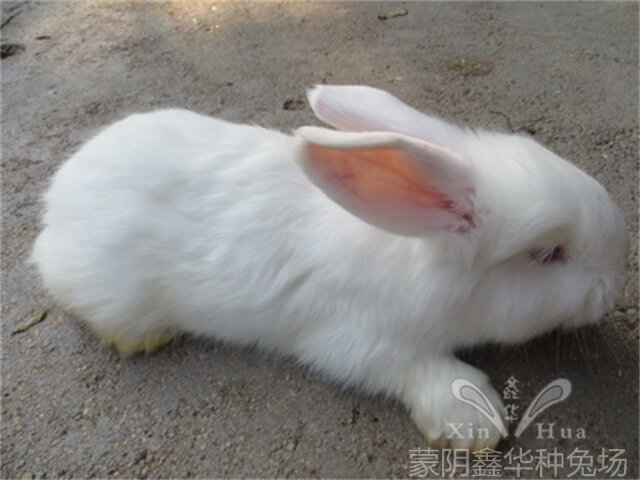

冬春养兔需要注意的几点
 发布日期:2016-04-22
来源:http://www.myxinhua.com 发布人:admin
发布日期:2016-04-22
来源:http://www.myxinhua.com 发布人:admin
今天我们蒙阴长毛兔厂家小编给大家介绍的是冬春养兔需要注意的几点:
Today we Mengyin Angora rabbit small manufacturers is to introduce some winter rabbit note:
1、注意补养

pay attention to nourishing
冬季青绿饲料缺乏,对家兔尤其是繁殖母兔,应设法每天喂一些青绿饲料,如菜叶、胡萝卜、豆科牧草等,以补充维生素和矿物质。冬季家兔热能消耗大,不论大小兔,日粮的供给量要比其它季节增加1/3,同时还要补喂含热能较高的精料,如大麦、玉米、地瓜干等。另外,冬季夜长,晚间加喂夜餐1次。
Lack of winter green feed on rabbit especially reproductive female rabbits, should try to feed every day some green feed, such as leaves, carrot, Leguminosae herbage to supplement vitamins and minerals. Winter rabbit energy consumption, regardless of the size of the rabbit, the dietary supply to an increase of 1 / 3 than in the other seasons, while also fed with high thermal energy concentrate, such as barley, corn, sweet potatoes and other dry. In addition, the winter nights are long, plus 1 evening dinner.
2、防寒保暖
cold and warm
兔舍中的温度应注意保持平衡,不可忽高忽低,保持更适宜温度18℃-24℃。兔舍内的温度在5℃以下时,仔兔会被冻死。同时,要注意气候的变化,防止寒流对兔的突然侵袭。
Rabbit in the temperature should pay attention to maintain a balance, can not ignore the high and low, to maintain the most appropriate temperature of 18 C -24. Rabbit house in temperature at 5 DEG C when the pups will freeze to death. At the same time, should pay attention to climate change, to prevent the invasion of the rabbit suddenly cold.
对繁殖母兔,在兔舍内安装取暖设施,舍温在15℃以上,同时要保持产窝内干燥卫生,防止煤气中毒。
On the reproductive female rabbits, in rabbit houses in the installation of heating facilities, Sherwin in 15 DEG C, at the same time to keep producing fossa dry sanitation, prevent gas poisoning.
3、多运动,防疾病
more exercise, prevention of disease
加强舍外运动,可增强兔子的抗寒力和抗病力。放出运动时,应在中午有阳光时进行。为防止肠炎的发生,兔子要饮温水,用热水拌料,忌喂冰冻饲料。冬季喂干饲料,要调制好再喂。
Strengthening the outdoor sports, can enhance the cold resistance and resistance of the rabbit. When the movement is released, it should be carried out when the sun is at noon. In order to prevent the occurrence of enteritis, the rabbit to drink warm water, with hot water mix, avoid feeding frozen feed. Feed dry in winter, to be fed again.